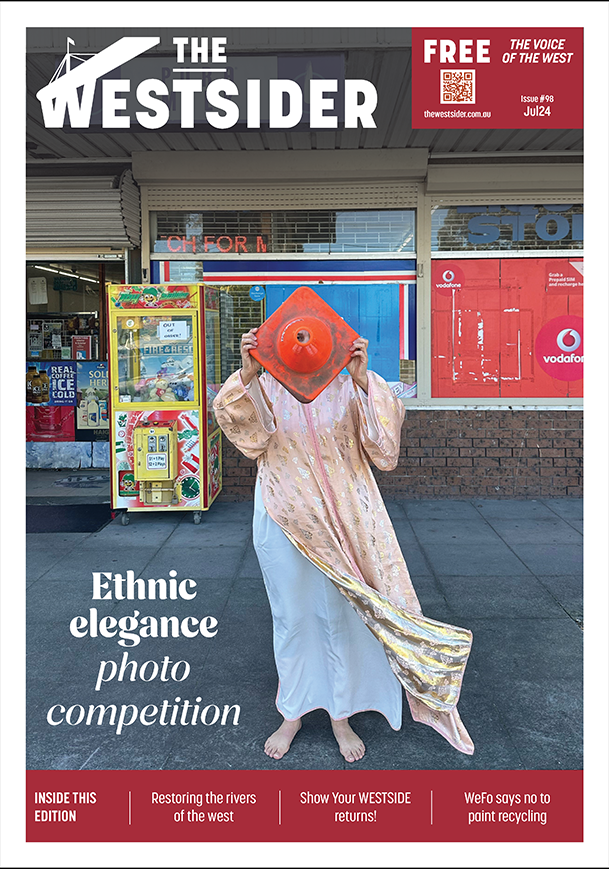By Rachel Jackson
Melbourne’s western suburbs have significant room for improvement when it comes to planting more vegetation.
The west is one of the fastest growing areas in Australia, and as the population increases, so does pollution. Increasing green spaces would help to provide more shade, improve air quality and enhance wellbeing.
That’s where Green Guerrillas come into the picture.
“If you look at the research, the west doesn’t fare well in terms of our green spaces,” says Sarah Tartakover, co-founder of the Green Guerrilla Group (GGG), a grassroots environmental group based in the west.
The GGG aims to “improve our environment and promote a sense of community by working on re-greening projects” and welcomes any members of the community who want to see a change of the landscape in the west.
“Anyone can be a Green Guerrilla,” says Tartakover. “There’s nothing special you have to do. You can just be a Green Guerrilla and get together with a neighbour, it can be one or two people.
A great example of what the GGG has acheived is Cuming Reserve in Yarraville. The 80-square-metre patch of grass will soon be home to more than 400 native shrubs.
Tartakover first noticed the potential for a re-greening project at Cuming Reserve two years ago during the pandemic lockdown.
“When we were reduced to our five kilometre zone, you get to know your backyard pretty well,” she says.
“I kept on walking down this path and thinking, gosh, that’s just such a wasted space.”
The area was home to a series of palm trees before they were removed a few years ago, but nothing was ever replanted.
Tartakover got in touch with the Maribyrnong Council where she worked closely with Urban Forest Planner Lia De Gruchy, to make her idea a reality.
“We’ve met at this site and we’ve worked out what this could look like, and what’s been really exciting is it’s actually gonna come to fruition,” Tartakover says.
With funding from the council, they were able to purchase 400 seedlings and the right to use the Woody Meadows model to guide the project.
I kept on walking down this path and thinking, gosh, that’s just such a wasted space.
The Woody Meadows model was developed by the University of Melbourne, and focuses on using affordable Australian shrubs to improve the appearance of low maintenance areas.
The GGG hopes that the model will be able to be used for more projects in future.
De Gruchy and Tartakover shared information about the project with Footscray High School VCE Horticulture teacher Jak Dunstan, who suggested that students plant the seedlings.
The project is a unique opportunity for the students, and allows them to make a visible difference in their communities, according to Tartakover.
“The wonderful thing about a project like this is it gives young people authentic opportunities to learn,” she says.
“It’s just such a rich learning project rather than doing something on the curriculum, which is totally divorced from our everyday lives.”
The students will complete the majority of the planting in early May and the GGG plan to finish any remaining work.
Tartakover hopes that the students will feel inspired to keep making small differences in their local community.
“There’s some great saying that it’s just small groups of people that change the world sometimes,” she says.
“I think the idea always was with this was that we’ll do it as a kind of template and a model, and then we hand the baton over to someone else, and we want to get young people engaged in it.”
The project has also been a source of inspiration for other members of the community.
Tartakover mentioned the project to maintenance staff working at Cuming Reserve and was pleasantly surprised by their support.
“These people are horticulturists, they don’t want to just mow lawns, they want projects like this that they can get excited about,” she says.
“I could see them thinking about how exciting that would be to look at other empty bits of land that need a bit of beautifying,”
Tartakover hopes that the space can be used as a meeting place for the community and is planning to apply for funding to install park benches, Indigenous artwork and QR codes.
The QR codes would provide visitors and locals with historical information about the local area.
“They’re gonna have a yarning space,” she says. “I think people are really interested in what was happening pre-colonisation in this area,” she said.
You can stay updated with this project and others organised by the GGG on their Facebook page.

